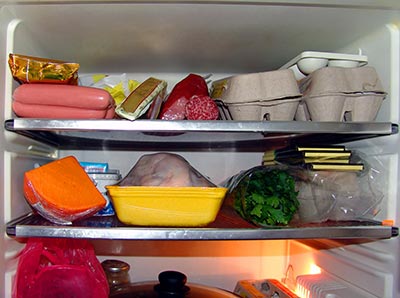Writer
Tammy Roberts When the electricity goes off, one important thing to know is how to save as much food as possible.
When the electricity goes off, one important thing to know is how to save as much food as possible.
The first key, according to Tammy Roberts, a University of Missouri Extension nutrition specialist, is to keep the doors of the refrigerator and freezer closed as much as possible to keep the cool air inside.
“Keep a thermometer in the refrigerator so you can monitor the temperature when you do open the door. Food is considered to be in the danger zone once the refrigerator temperature goes above 40 degrees Fahrenheit,” Roberts said.
Discard foods that have been above 40 degrees F for more than two hours.
Protein-containing foods such as raw or cooked meat, poultry, seafood, dairy products, eggs and egg substitutes and soft cheeses are most at risk for illness-causing bacteria growth.
To extend colder temperatures in the freezer, add dry ice. Just keep in mind that dry ice is 216 degrees below zero, so it must be handled carefully (and with gloves).
Roberts says to allow 3 pounds of dry ice per cubic foot of freezer space, and to not let the dry ice come in direct contact with the food. Fifty pounds of dry ice should maintain the temperature in the freezer for two days.
“If you have an upright freezer, then dry ice should be placed on each shelf. If you have a large amount of empty space, fill the space with clean blankets or towels to decrease circulation. Air circulation speeds up the dissipation of dry ice,” Roberts said.
Generally, food can stay frozen in the freezer one to three days without electricity. Foods in the freezer can be refrozen if they still have ice crystals present.
“When you refreeze those foods, move them to the top to be used first. Thawed foods that have not reached danger zone temperatures — that is, above 40 degrees F for more than two hours — can be cooked and then frozen,” Roberts said.